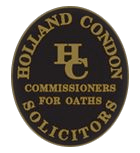29th April, 2020
The various courts have been conducting mock hearings online to try to get the Court system back up and running.
Last week, the Supreme Court issued guidelines on how cases will be conducted in the era of remote working :-
Guidance for Participants at Remote Supreme Court Hearings
Courts staff will be in direct contact with the parties to explain any technical issues about joining in the remote hearing. The purpose of this guidance is to deal with the actual conduct of the hearing itself. This guidance will be reviewed from time to time in the light of the experience of the Court in conducting remote hearings. Practitioners should ensure that they have consulted the most up to date guidance.
In Advance
By 4.30 p.m. on the evening prior to the hearing each side should send to the Registrar, by email addressed to supremecourt@courts.ie, the following: –
The names of all of those who will be “present” at the hearing in respect of that party. While the full legal teams will almost certainly have been identified in advance in contact with courts staff it will be important to have as much certainty as possible about who should be present so as to ensure that the hearing does not commence until everyone has joined the virtual hearing room. Thus, for example, the solicitors who will actually participate should be identified. If a counsel member of a legal team will not actually be present, then their name should not be given at this stage although that will not prevent them being part of the team on the record should their identity have been notified to the registrar prior to the hearing. Where the legal team has arranged that a party can access the hearing remotely then the name of the person who will have that access should be included in the list. The legal team should ensure that any person accessing the hearing is fully aware of the terms of the protocol for the time being in place in respect of such access. In particular, it should be emphasised that such persons should at all times have their microphone and camera off so as not to interfere with the hearing. That will not prevent such persons from being able to see and hear the proceedings in full.
The identity of the person who will present the legal argument on behalf of that party. It should be emphasised that all other members of the legal team should have the mute button pressed at all times so as to avoid interference. The speaker should also press the mute button when they are not involved in a speaking role.
By 9.15 a.m. at the latest on the morning of the hearing each side should send to the Registrar, by email at the address mentioned above, the following; –
A list of documents (including authorities) which are likely to be actually opened in the course of submissions. This list should not include documents which will only be referred to without opening. For example, where the only passage from a judgment to which reference is likely to be made is quoted in the written submissions of the party concerned then there is no need to include that document. It should be emphasised that the purpose of this requirement is to maximise the efficiency of document management during a remote hearing. However, it is understood that occasions may arise where, as a result of the way in which a hearing develops, it may be found necessary to refer to an additional document or documents which were not mentioned in this list. The Court has not found that the facility on Pexip to present a document on the screen while the Court is being addressed is a particularly effective way of making reference to written materials. It should be noted that the members of the Court participating remotely will have two devices. The first will enable the members of the Court to participate in and view the hearing. A separate device will be available for members of the Court to access documents which have been filed electronically.
A list referencing the exact part of each document the parties propose on opening. Parties are encouraged, where possible, to appropriately highlight the relevant sections on the electronic documents, prior to filing. However, it is understood that such sections may not be identified until immediately prior to the conduct of the hearing.
The Commencement of the Hearing
Instead of the usual method of the case being called by the registrar and the leading member of each legal team announcing the appearances, the practice will be adopted of the presiding judge indicating his/her understanding of those who appear on behalf of the parties and those who will be making submissions. The Court will have had a prehearing conference in advance of the commencement of the hearing itself and it may be that the presiding judge will have some questions of clarification to put to the parties before the submissions commence. This is designed to minimise the need for questioning in the course of the submissions.
During the Hearing
The Court will endeavour, where possible, to confine questions to counsel to a time after counsel has finished his/her submissions or, where there is more than one substantive issue, has finished submissions in respect of each issue. Where there is more than one issue counsel should indicate when the submissions on each issue have completed at which stage the presiding judge may invite the members of the Court to address any questions which they may have in respect of that issue. In all other respects the sequencing of the hearing will be as would have been the case in respect of a traditional hearing.
Reference to Documents Filed Electronically
Members of a legal team addressing the Court who wish to refer to documents which have been filed electronically should have regard to the manner in which the documents were filed and the manner in which the members of the Court will, therefore, be able to access the documents. Having regard to the manner in which the documents were filed, consideration should be given to the easiest way to facilitate the members of the Court in quickly accessing any documents which require to be opened.
Communications between Parties/Legal Teams
It should be emphasised that the virtual meeting room does not, in itself, provide a means for the legal team to communicate amongst its members or, where necessary, to communicate to the relevant party where instructions need to be obtained. It is, therefore, strongly recommended that some appropriate means of real time communication during the hearing is set up. In other jurisdictions models such as the establishment of a specific Whatsapp group have been found to be satisfactory and, indeed, the Court is aware of one case in this jurisdiction where there was a corporeal hearing after the commencement of the crisis but where it was decided that only the “speaking” counsel would be in court. In that case a Whatsapp group allowed free communication between the counsel who was in the courtroom and other members of the legal team. However, it should be emphasised that it is a matter for each side to put whatever measures it considers appropriate in place.




